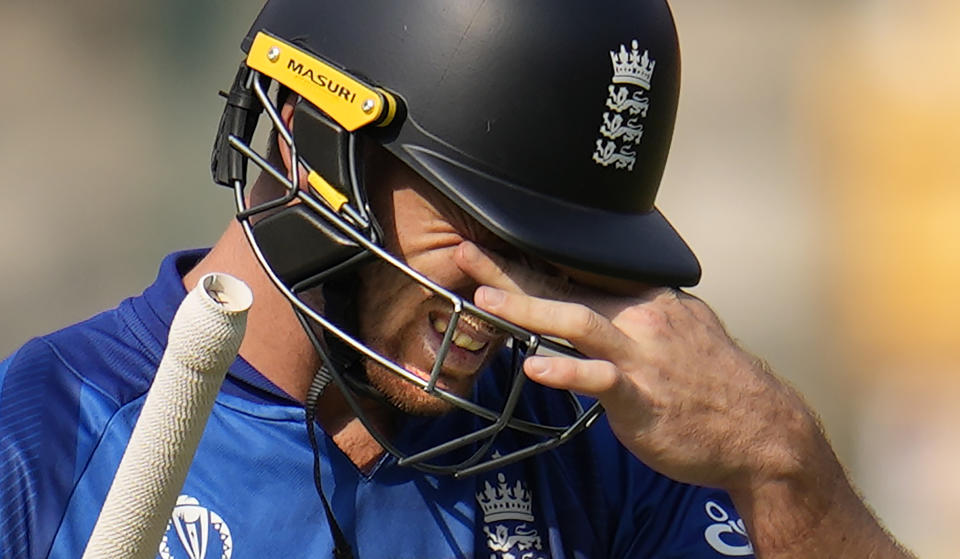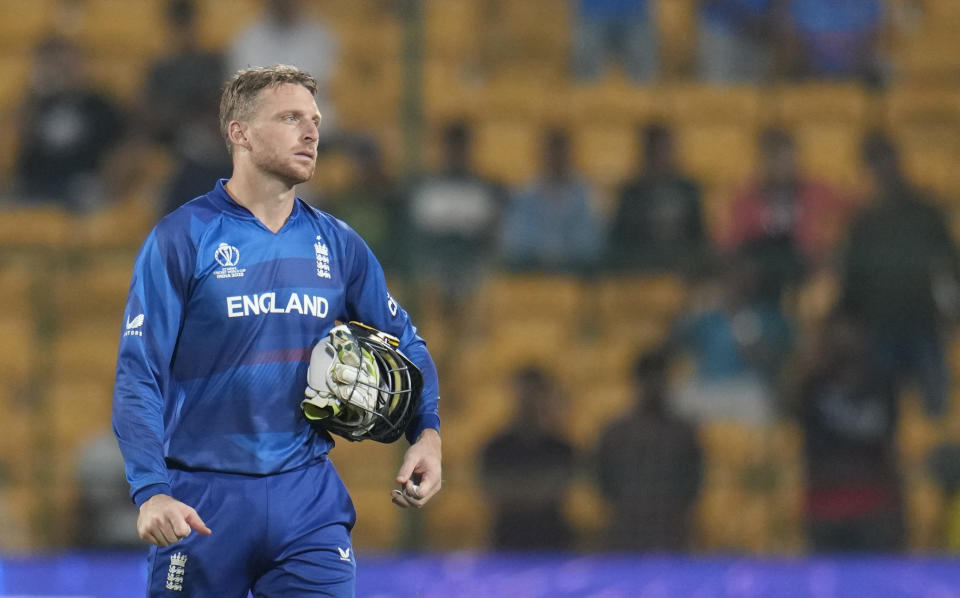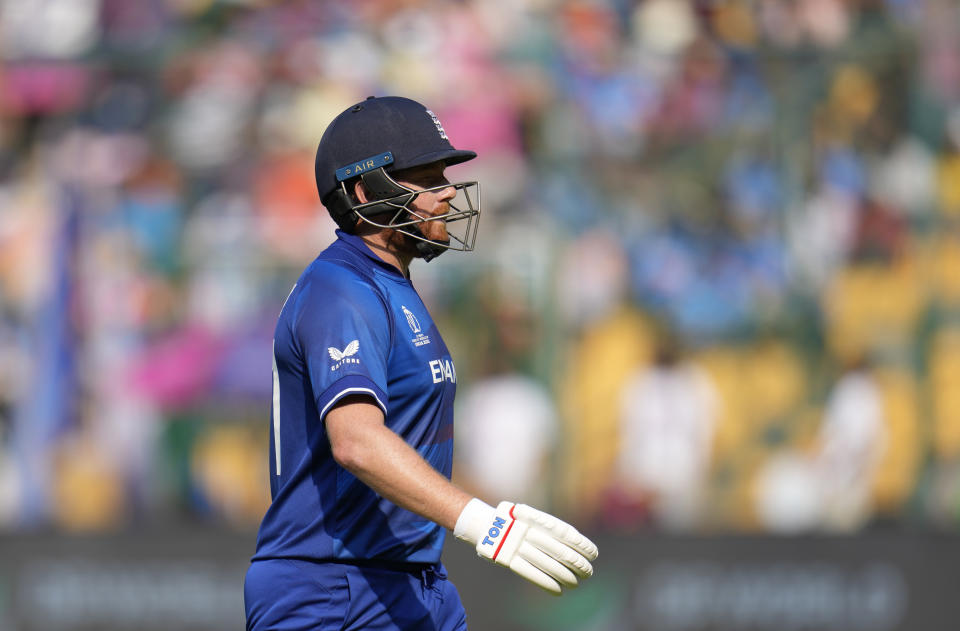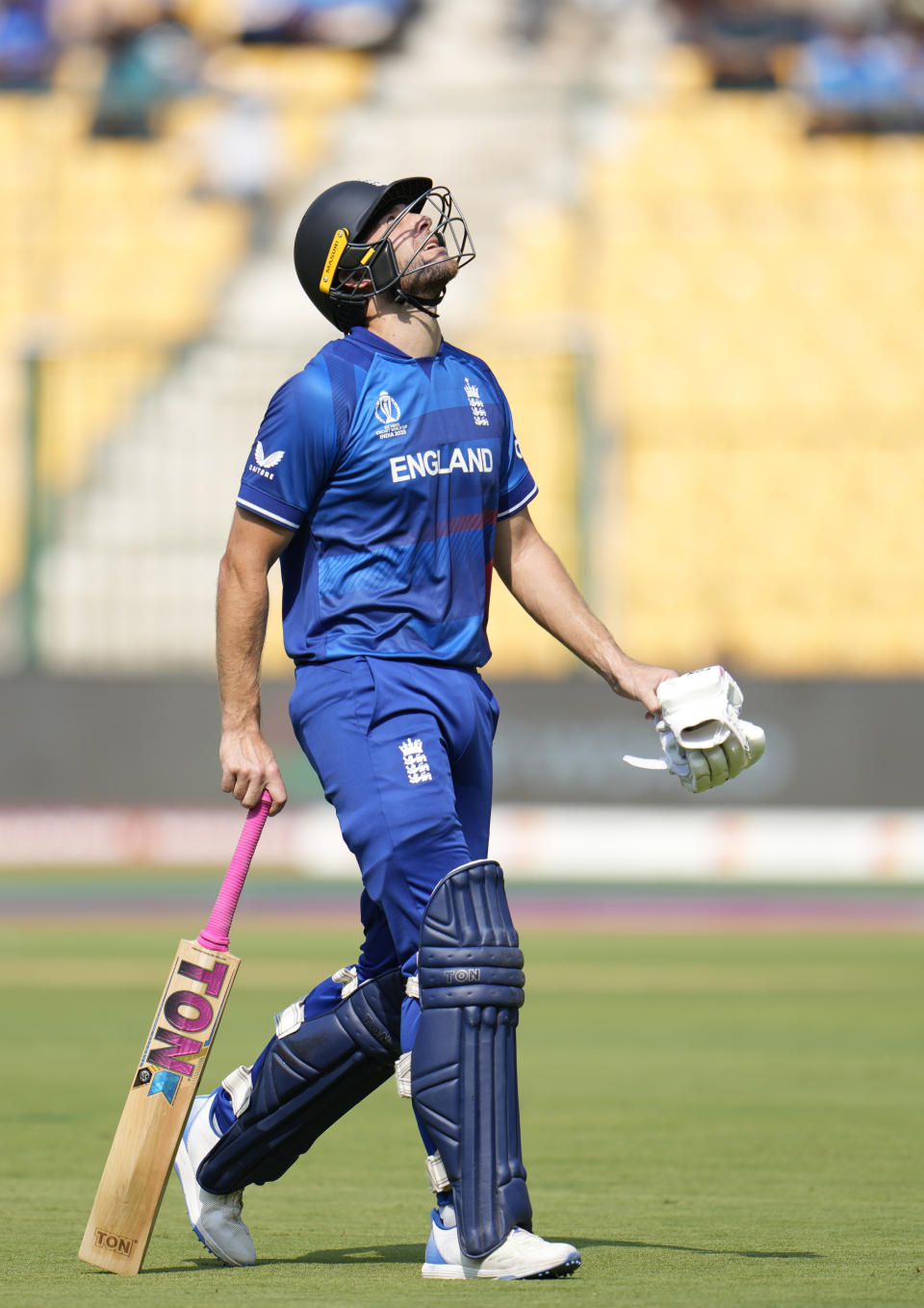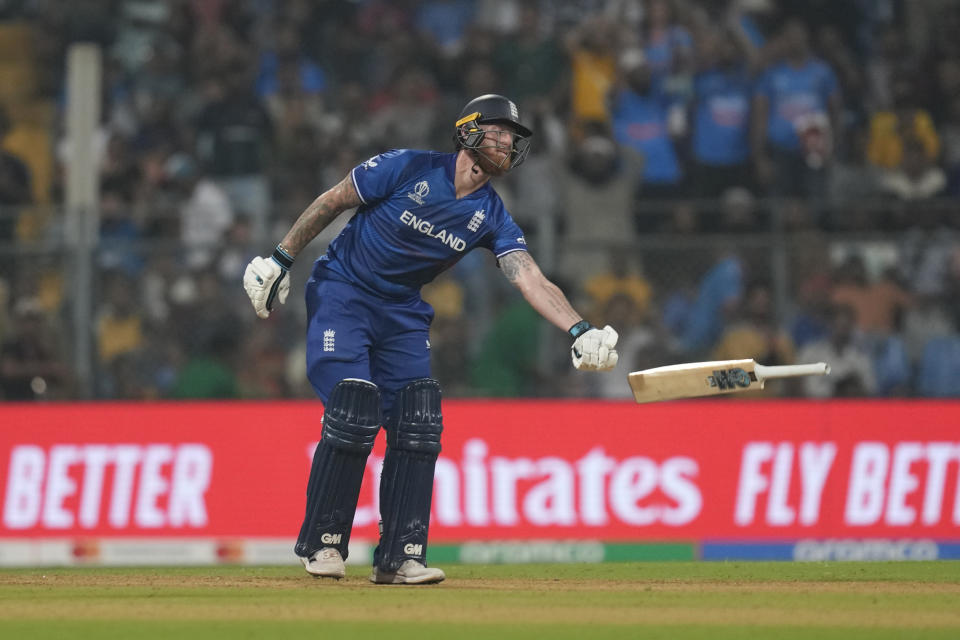End-of-an-era feel as England implodes at the Cricket World Cup to leave title defense in tatters
- Oops!Something went wrong.Please try again later.
- Oops!Something went wrong.Please try again later.
- Oops!Something went wrong.Please try again later.
England arrived as the king of white-ball cricket, the reigning ODI and T20 world champion with a squad containing some of the best limited-overs players the country has ever produced.
But halfway through the group stage of the Cricket World Cup and its title defense is virtually over, with a run of abject, record-setting losses heralding what many see as the beginning of the end of England’s greatest white-ball era.
How to explain a first ever loss to Afghanistan? The biggest ever defeat by runs (229) to South Africa? And, on Thursday, an eight-wicket hammering by Sri Lanka?
“I’ve no clear answer,” said Jos Buttler, England’s visibly shaken captain.
Mathematically, England is not out of the World Cup, yet it will need the team to win each of its last four group games — it has won only one of five so far — and for other results to go its way in the most spectacular way.
Matthew Mott, an Australian who is England’s white-ball coach, said he’d pretty much given up hope and the likelihood is that host nation India, unbeaten and in impressive form with bat and ball, will administer the killer blow in the teams’ meeting in Lucknow on Sunday.
The English are ninth in the World Cup standings with two points from their sole victory over Bangladesh and with only the Netherlands below them.
Here’s a look at some factors behind one of the worst World Cup title defenses in any sport:
DOWNTURN IN FORM
Maybe it's the pressure of being defending champions, maybe it's simply the highs and lows of elite sports. But England's players, collectively, have hit a run of bad form at the worst possible time.
There's been only one century in five matches (Dawid Malan against Bangladesh) and there were only two fifties in the other four games combined (Joe Root against New Zealand and Harry Brook against Afghanistan).
Mark Wood, the express pacer in the middle overs, went for more than 10 an over against New Zealand and South Africa. Strike bowler Chris Woakes completed only six of his allotted 10 overs against New Zealand and only four in England's third game, against Afghanistan, and was then dropped.
“We’ve saved our worst form for when we needed it the most,” Mott said.
SELECTION
Let's go back to the start. The 15-man squad was announced in August, a month before the deadline, and didn't include Harry Brook, to many the future of English cricket. It did include Jason Roy, who was injured at the time and has been playing 20-over cricket in the United States.
Within a few weeks, selectors had backtracked, Brook was in and Roy — a World Cup winner from 2019 and one of England's best ever ODI openers — was out.
Wood went into the World Cup after not having played cricket since the Ashes series. Root felt so undercooked he wanted to play the pre-World Cup ODI series against Ireland that wasn't featuring any World Cup-bound players. He was allowed to play in the first game but it was wiped out because of rain.
Ben Stokes came out of ODI retirement and was regarded as a savior, but perhaps impacted the team dynamics and versatility after being included only as a batter — and not as an allrounder — to preserve his battered body.
Then, just before the tournament started, Stokes felt his hip “pop” in practice and missed the first three games.
AGEING TEAM
Former England captain Nasser Hussain called it “the end of an era” and “a bridge too far" for some of the team's top players, and it's hard to argue.
Even without Roy, England tried to cling onto the majority of the team that won the tournament in 2019, judging that experience and class would trump everything else. It was telling that against Sri Lanka, a must-win match, England selected a team with all 11 players in their 30s.
It seems there hasn't been any succession planning since England's greatest ODI moment four years ago and others, such as the powerful South Africans, have caught up in the meantime.
STRUCTURAL ISSUES
That feeds into structural issues in the English game that might have harmed the ODI team.
England's cricket leadership put all its eggs in the ODI basket ahead of the 2019 World Cup that the country hosted, and it paid off with a first 50-over world title. The focus has since swung back to the test team, which has had a reset under the stewardship of Stokes and coach Brendon McCullum, leading to the ODI side being largely forgotten.
The four matches in the World Cup warmup series against New Zealand last month were England's first ODI games in six months and came after an intense Ashes series against Australia.
The ECB's obsession with introducing the Hundred into the English game might not have helped, either, with yet another limited-overs format clogging up the schedule.
DECISION-MAKING
There were few bigger head-scratchers this tournament than England's decision not just to bowl first against South Africa in the heat of Mumbai, but also dispense with its allrounders to weaken its typically deep batting lineup — the traditional strength of the team.
Selectors have chopped and changed the lineup, especially the bowling department, which has been destabilizing. The players haven't seemed to adapt to conditions, with Wood and Woakes not finding the right length and batters giving away their wickets cheaply and not building the kind of partnerships needed in ODI cricket.
Those in charge of English cricket aren't blameless, either. The decision to announce in the middle of a World Cup the list of players getting central contracts for one, two or three years seemed bad timing. Hussain, for example, remarked that David Willey, the only member of World Cup squad not to receive a new deal, was left unhappy.
___
AP cricket: https://apnews.com/hub/cricket
